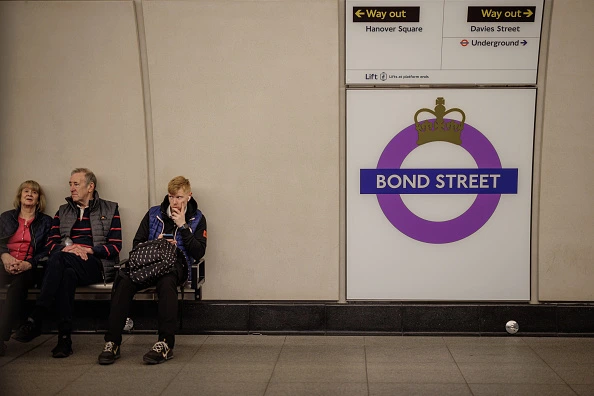
On 7 June, a Transport for London (TfL) report claimed that the Elizabeth Line is the fifth most reliable rail service in the country – bested only by Merseyrail, Greater Anglia, London Overground and c2c.

But if you were to consult a London commuter, you may get a different opinion. Turn to Twitter and you will soon see it described as “the most unreliable service in London” and “a life-changing triumph [that] doesn’t work anymore for no discernible reason”.
Fifth nationwide would be an impressive feat for a service that has only officially been open since May 2022, but how accurate is it? City Monitor investigates.
How is rail reliability measured?
Since 2000, the reliability of national rail services has been tallied by a metric called the ‘Public Performance Measure’ (PPM). This tracks the number of services that call at all of their stops and arrive at their intended destinations within five minutes of the scheduled time (or ten for long-distance services).
The number is considered the industry standard for measuring rail performance, but it does have its flaws. For instance, it treats all journeys as equal: a full train on a long-haul journey contributes to the average in the same way as an empty short-haul one (though peak time PPM is also measured separately). Along with that, the rating is tied to schedules locked in at 10pm the previous day, meaning that disruptions with advanced knowledge such as rail strikes don’t flag as PPM fails.
As a result, the measurement doesn’t always reflect the experience of passengers.
The official performance of the Elizabeth Line
Using PPM as a measure, the data suggests that despite acknowledged ‘bugs’ and ‘significant points failures’, the Elizabeth Line is one of the most reliable in England, scoring 91.9% in April. That meant it placed fifth for the month, behind Greater Anglia, c2c, Merseyrail and London Overground, and well ahead of the worst performer, Avanti West Coast, which trailed behind with 80.7%.
There are several potential problems here, however, that may go some way to explaining the dissonance between the official performance of the line and the apparent commuter experience.
The first of these is the aforementioned gap between statistics and experience inherent to PPM.
The second is that the Elizabeth Line fits awkwardly into both being a national service and part of the London Underground network. Much like London Overground, it is run by a private operator in partnership with TfL, meaning that it counts as competing with the likes of Southeastern and Greater Anglia despite a great number of passengers treating it more like the Jubilee or Central lines.
Thirdly, and perhaps most importantly, the London underground network does not use PPM so it can’t be used for complete comparison.
The Elizabeth Line vs the Underground
TfL does have hard statistics relating to tube performance. For example, it tracks the percentage of services successfully operated and the excess journey time, but again we run into problems since the former omits the Elizabeth Line and the latter ceased to be used at the start of the Covid-19 pandemic.
Even if both could be used, they are separate – unlike PPM – so couldn’t be compared like-for-like.
There is one common measure that can be used to gauge the reliability of the lines, however: service status records.
Since TfL makes its APIs public – which is what allows services like CityMapper and Google Maps to work – we can examine the historical records of when each line has a good service. This can be understood to be services running “as we’d expect them to” according to TfL, which may be a less specific measure than PPM but it arguably aligns more closely to what the average passenger would consider reliable.
City Monitor has analysed that data, compiled using records from tubestatus.net, to rank the tube lines by the average time per month there has been a good service since the Elizabeth Line’s launch.
By this metric, we can see that it is far from a top performer. In fact, it’s third from the bottom, along with the Waterloo and City Line and the London Overground.
While the top performers each had a good service 81% of the time between May 2022 and May 2023, the Elizabeth Line fell well below both those with 57%. This was also significantly less than the average across all lines of 67%.
Even if you were to only compare the same timeframe as that cited by TfL – April 2023 – the Elizabeth line will still only score 57% good service.
Is the Elizabeth Line actually reliable?
Looking at these two measures side-by-side, it starts to become clear why the Elizabeth Line is rated highly but experienced poorly by passengers. The historical service status data reflects how often the lines are operating as they should, whereas PPM comes pre-adjusted with lower expectations (strikes, planned engineering works, for example).
That may suit rail operators, for whom expectation management is crucial, especially given the general dissatisfaction with British rail provision. But for passengers, by and large, the reason that service is performing well or poorly is far less important than the plain fact of whether they can get where they need to be.
So, if we were to frame the question as: ‘How often does the Elizabeth Line provide the service passengers expect?’, the answer would be: comparatively rarely.
[Read more: Why is train travel in the UK so expensive?]






